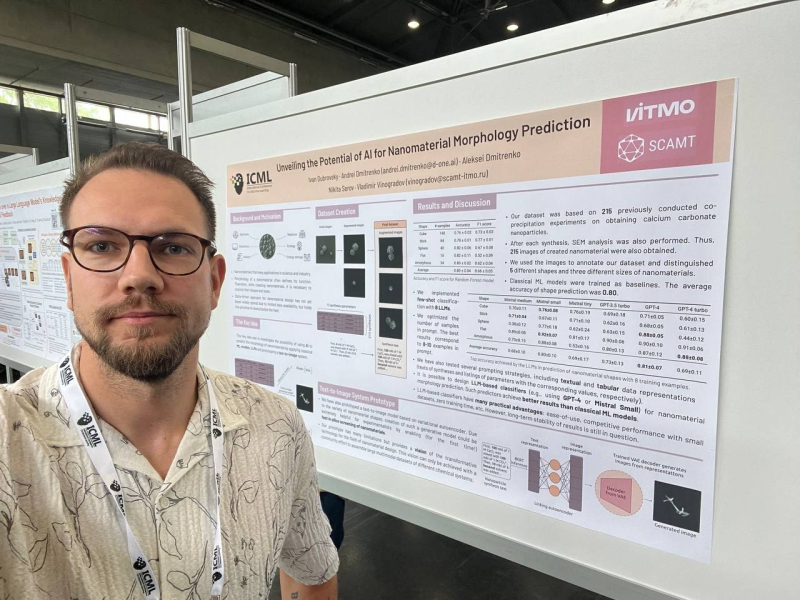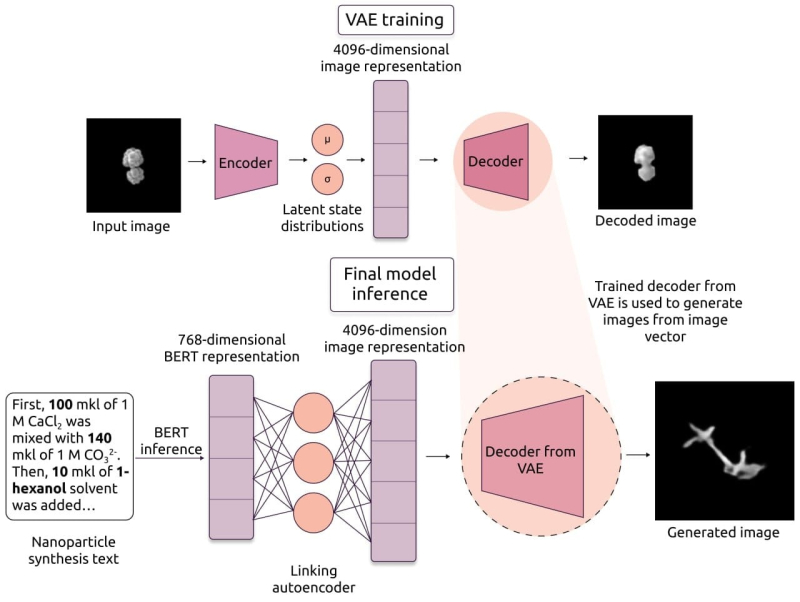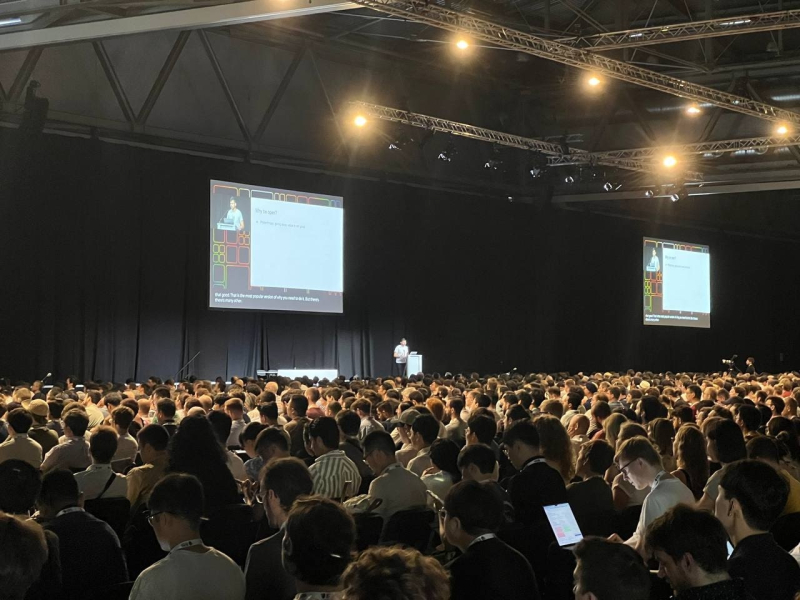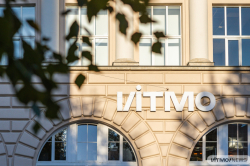ICML 2024 is the 41st international conference on machine learning; this year, the event was held in Vienna on July 21-27. In the latest ShanghaiRanking Academic Excellence Survey, ICML ranks third in the category Computer Science & Engineering, while in the CORE conference ranking it features as an A* conference (the highest rank). By joining such conferences, researchers get the opportunity to present their studies at the international level and collaborate with other research groups. At the conference, the world’s leading companies present their breakthroughs in machine learning and artificial intelligence. In total, ICML 2024 featured 180 oral and 2,283 poster presentations.
Scientists from ITMO’s Center for AI in Chemistry delivered a presentation titled Unveiling the Potential of AI for Nanomaterial Morphology Prediction.
They have developed an ML-based approach to predicting the morphological properties of nanoparticles – their size, structure, and shape – and created the first prototype of the generative model that will create images of these particles.
“When we synthesize new nanomaterials, it is important to be able to predict, and thus control, their properties, particularly the morphology of particles. It affects the distribution of particles in the body (when it comes to drug delivery systems), their toxicity, and catalytic properties. The ability to predict the properties of nanoparticles in advance reduces the number of experiments needed and accelerates the process of discovering new nanomaterials for various industrial applications,” explains the paper’s first author Ivan Dubrovsky, a graduate of ITMO’s Master’s program Chemistry and Artificial Intelligence.
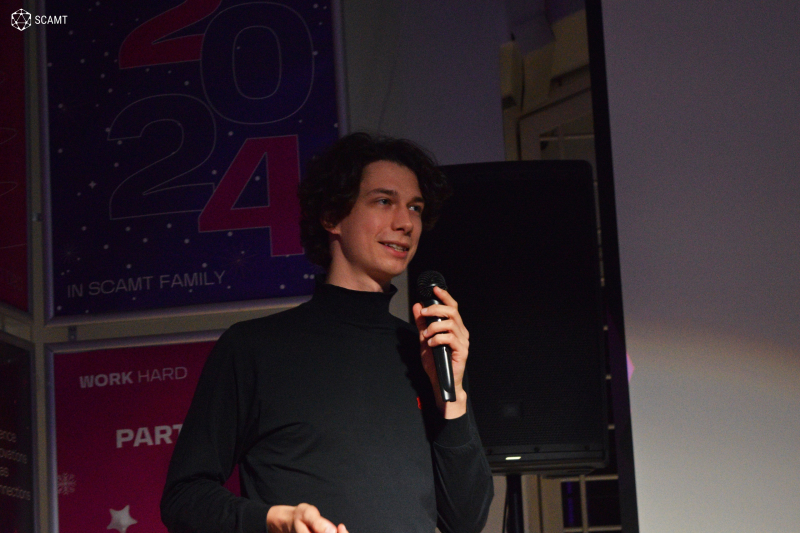
Ivan Dubrovsky. Credit: SCAMT Institute / vk.com/scamt
In training the model, the researchers used a dataset with descriptions of 215 syntheses of nanomaterials and an equal number of images of the resulting particles.
“It was the first time we used large language models developed by Mistral AI and OpenAI to predict nanoparticle properties. They are relatively easy to use and provide a good alternative to the usual machine learning models because they do not require advanced programming skills and they also produce more accurate results. Specifically, the average accuracy of predicting nanoparticle shapes using GPT-4 was 81%, which exceeds previously proposed approaches,” shares the paper’s second author Andrey Dmitrenko, a leading researcher at ITMO’s ChemBio Cluster.
Additionally, the researchers have developed a prototype generative model that can create nanoparticle images based on the description of their synthesis. Currently, the model suggested by the researchers is meant for predicting the properties of calcium carbonate, but in the future the authors are planning to adapt it for other nanomaterials as well. The algorithm is promising to be useful in creating particles for catalyst reactions and drug delivery systems.

